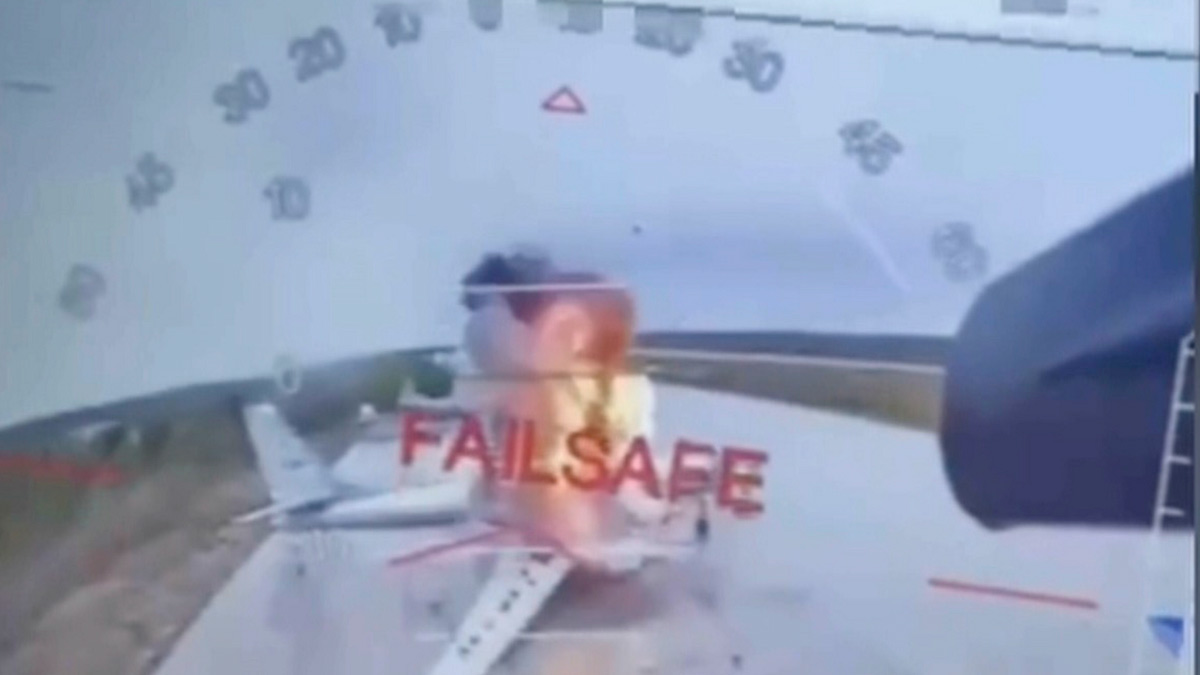Ukraine’s guerrilla tactics shock Russia with its ‘Gaza moment’
 In this image taken from video released June 1, 2025, by a source in the Ukrainian Security Service shows a Ukrainian drone striking Russian planes deep in Russia's territory | PTI
In this image taken from video released June 1, 2025, by a source in the Ukrainian Security Service shows a Ukrainian drone striking Russian planes deep in Russia's territory | PTI
In another reiteration of the never-ceasing relevance of the guerrilla style of warfare—of hitting behind enemy lines in a surprise attack—Russia, on Sunday, was subjected to its ‘Gaza moment’ when the Ukraine military utterly shocked Russia by launching attacks in the latter’s airbases, one of which is situated more than 4,000 km away from the Russia-Ukraine border.
The only difference with the classical guerrilla tactic is that drones, not fighters, were used in the attack.
The attack, of game-changing proportions, means that Russia’s capability to launch long-range strategic attacks will be considerably curtailed besides eroding its negotiation status during the ongoing Russia-Ukraine talks to end the conflict.
It would disturb the logistics of the Russian military and throw its supply lines into disarray.
ALSO READ: Why Ukraine drone strikes targeted Russia's Tupolev Tu-95MS strategic bomber aircraft?
Notably, it would have the important impact of booting the sagging morale of the Ukrainians in the face of a relentless Russian offensive.
Russian forces, gearing up for a ‘summer offensive’ when the ground is firm and hard to deploy one of Russia’s key military strengths—long and medium-range heavy artillery guns—would be blunted for some time.
The Ukrainian operation, codenamed 'Spider's Web', can be likened to the October 7, 2023 attack by Hamas in Gaza in one of the massive failures of intelligence and security systems in recent military history. The Gaza attack led to a war that is still ongoing with more than 56,000 people having lost their lives till now.
Calling it an “absolutely unique operation”, Ukraine President Volodymyr Zelenskyy posted on social media that 117 drones were used in the attack that had been planned for one-and-a-half years, with the “office” of the operation on Russian territory located right next to an important Federal Security Service (FSB) headquarter.
The FSB is Russia’s main security agency and the primary successor agency to the well-known KGB.
According to Zelenskyy, 34 per cent of Russia’s strategic cruise missile carriers at the airfields were hit.
According to reports, 41 Russian strategic bombers, including A-50 long-range radar detection aircraft and Tu-95 and Tu-22M3 strategic bombers were hit in the strikes on four Russian air bases—Belaya Air Base in Irkutsk Oblast (southeastern Siberia), Olenya Air Base in Murmansk Oblast, Dyagilevo Air Base in Ryazan Oblast, and Ivanovo Air Base in Ivanovo Oblast.
In financial terms, the damage inflicted is reported to be in the range of about $7 billion worth.
According to various reports, including those attributed to Ukraine’s Security Service (SBU), the First Person View (FPV) drones had been transported and stored in trucks with retractable roofs over a period of time and parked near Russian air bases before remotely opening the truck roofs and launching the killer drones.
Zelensky said the Ukrainian agents involved in the operation had already been withdrawn to Ukraine before the operation.
Defence